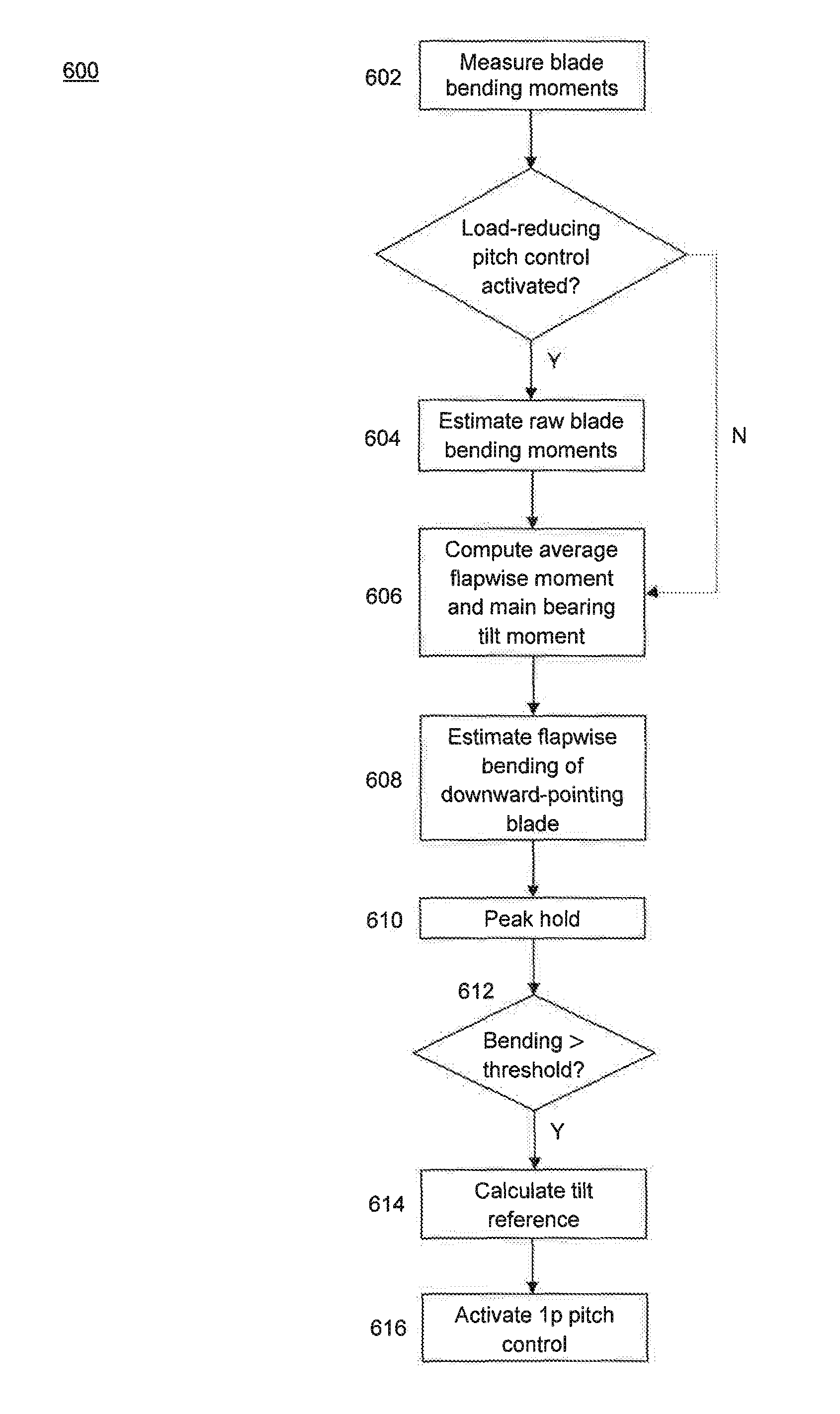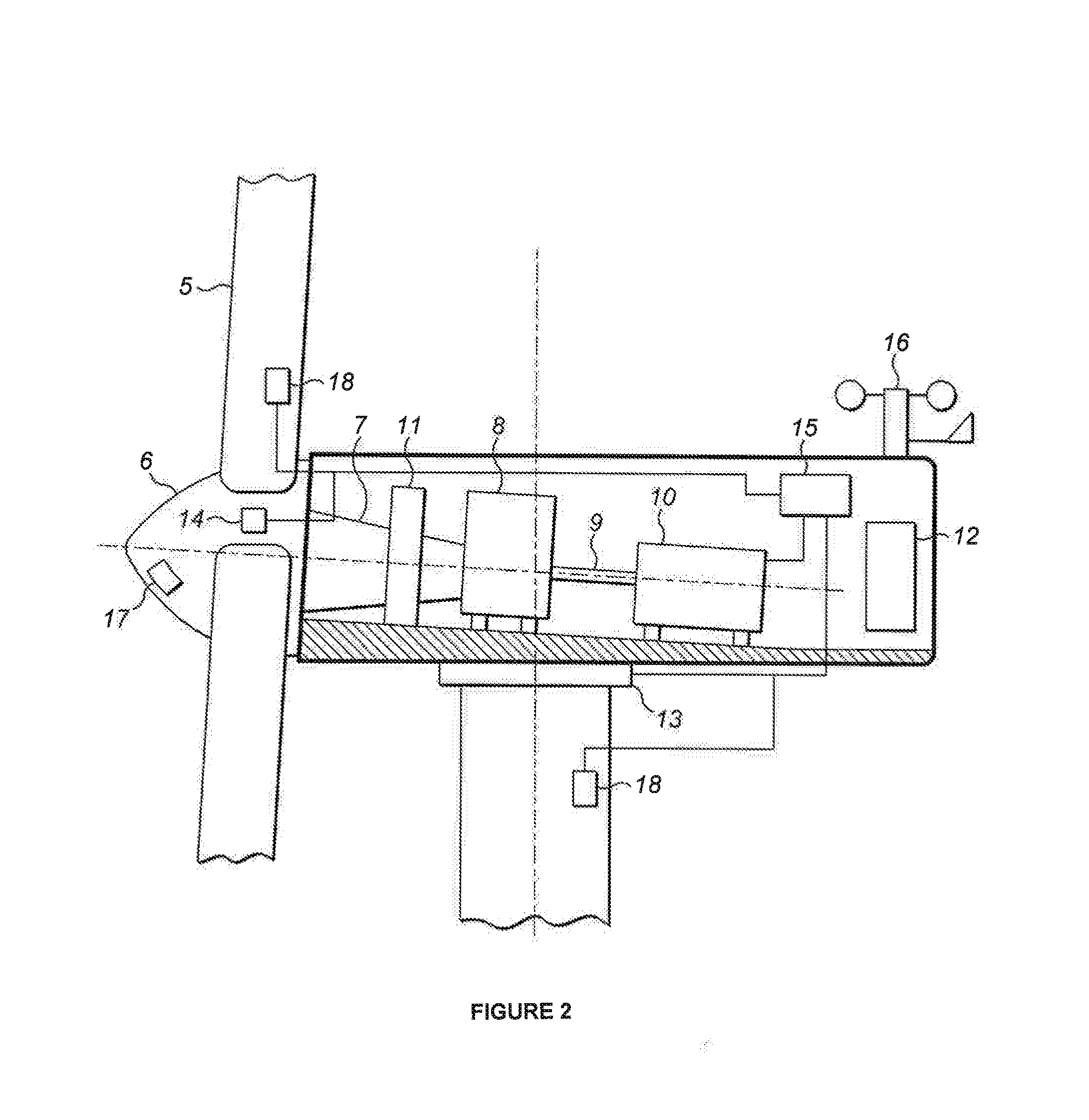Methods and apparatus for controlling wind turbines
a technology of wind turbines and control methods, applied in mechanical equipment, wind energy generation, machines/engines, etc., can solve the problems of large gravitational load, complex aerodynamics, and large diameter of rotors, and achieve the effects of reducing load, improving balance, and selecting methods according
- Summary
- Abstract
- Description
- Claims
- Application Information
AI Technical Summary
Benefits of technology
Problems solved by technology
Method used
Image
Examples
Embodiment Construction
[0029]The present invention provides a systematic approach to developing activation algorithms for active wind turbine control measures. Embodiments of the invention are characterised by the provision of a damage estimate that is indicative of the damage caused to a wind turbine component by one or more operational loads on that component, and by the use of this signal in a decision concerning the degree to which load-reducing control methods are applied during the operation of the turbine. As will become apparent from the discussion below, the way in which the damage estimate is calculated will vary, and will depend on the specific load and wind turbine component in question. In the following, several examples will be given and described in detail in the context of existing blade pitch control strategies that are used to alleviate fatigue loads on the wind turbine rotor blades and on the bearing that supports the turbine main shaft. It will be understood, however that the specific ...
PUM
 Login to View More
Login to View More Abstract
Description
Claims
Application Information
 Login to View More
Login to View More - R&D
- Intellectual Property
- Life Sciences
- Materials
- Tech Scout
- Unparalleled Data Quality
- Higher Quality Content
- 60% Fewer Hallucinations
Browse by: Latest US Patents, China's latest patents, Technical Efficacy Thesaurus, Application Domain, Technology Topic, Popular Technical Reports.
© 2025 PatSnap. All rights reserved.Legal|Privacy policy|Modern Slavery Act Transparency Statement|Sitemap|About US| Contact US: help@patsnap.com



